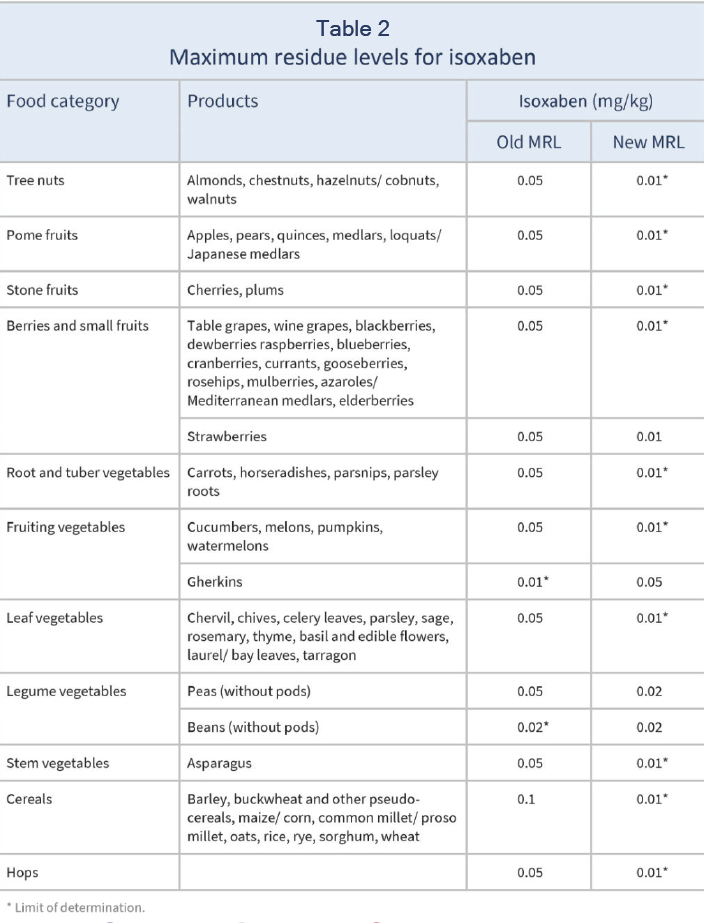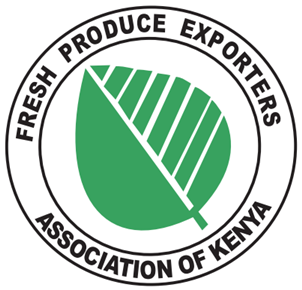- September 28, 2023
- Posted by: admin
- Categories: Compliance & Standards, General Information
Commission Regulation (EU) 2023/466 of 3 March 2023 amending Annexes II, III and V to Regulation (EC) No 396/2005 of the European Parliament and of the Council as regards maximum residue levels for isoxaben, novaluron and tetraconazole in or on certain products
Commission Regulation (EU) 2023/1719 of 8 September 2023 amending Annexes II and IV to Regulation (EC) No 396/2005 of the European Parliament and of the Council as regards maximum residue levels for isoxaben, metaldehyde, Metarhizium brunneum strain Ma 43, paclobutrazol and Straight Chain Lepidopteran Pheromones (SCLP) in or on certain products
UPDATE
In March 2023 the EU reduced the MRLs for isoxaben to the limit of determination (LOD, the lowest level that can be detected using the most modern and reliable analytical methods) on fruit, vegetables, cereals and hops, with the exception of courgettes and beans without pods. EFSA applied the data relating to beans without pods to establish the same MRL for peas without pods. On 11 September 2023, the EU increased the MRL for isoxaben on gherkins, applying the data relating to courgettes to the MRL for gherkins.
IMPACTED PRODUCTS
Cherries, strawberries, blueberries, carrots, cucumbers, pumpkins, watermelons, chives, celery leaves, parsley, sage, rosemary, thyme, basil, thyme, peas (without pods), asparagus.
WHAT IS CHANGING?
MRLs
The amendments to existing MRLs, including the establishment of MRLs for beans and peas (without pods), are shown in Table 2. The existing MRL for courgettes remains unchanged at 0.05 mg/kg. For gherkins, the MRL was initially reduced to 0.01 mg/kg, but in September 2023 was revised to 0.05 mg/kg (the same as courgettes).
LODs
For all fruits and vegetables not listed in Table 2, oilseeds, and sugar plants, the LOD is decreased from 0.02 to 0.01 mg/kg. The LOD on teas, coffees, infusions and spices is increased from 0.02 to 0.05 mg/kg.
WHY?
Following a review of existing isoxaben MRLs (EFSA 2022), it was recommended to lower the existing MRLs for fruits and vegetables – with the exception of courgettes and fresh beans without pods, for which there is sufficient supporting data for the current good agricultural practices (GAP).
A further request to modify the MRL on gherkins was submitted using the fast-track procedure. Because the data supporting the MRL for courgettes can be extrapolated to gherkins, that request was accepted by the European Commission.
TIMELINE
The new MRLs apply from 26 September 2023. For products exported before that date, the old MRLs still apply.
The 0.05 mg/kg MRL for gherkins will apply from 27 September 2023.
RECOMMENDED ACTIONS
Suppliers to the EU market of fruit, vegetables, cereals and hops (with the exception of courgettes, gherkins, and beans/peas without pods) should check for current use of isoxaben on these products and seek alternative solutions to isoxaben. Suppliers of strawberries should verify whether existing agricultural practices are compatible with the reduced MRL of 0.01 mg/kg.


